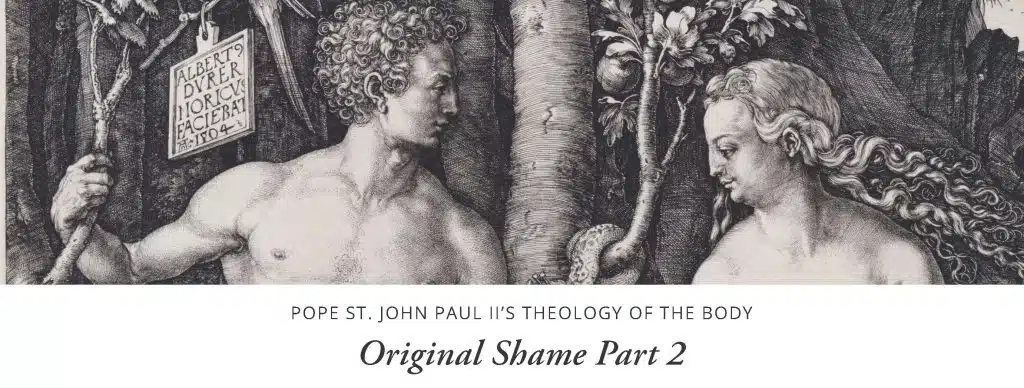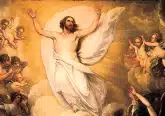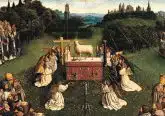Original Shame Part 2

Note: This article is part of an ongoing series on Pope St. John Paul II’s “Theology of the Body.”
As described in my previous article, Pope St. John Paul II regarded the emergence of shame in the wake of the original sin committed by our first parents as a “boundary experience” that demarcates original man and historical man. Prior to this experience, man and woman were naked and felt no shame, but after their rebellion and fall from grace, they hid themselves from God and from each other. Last month, we looked at the impact of original shame on man’s relationship with God. Let’s now look at how it has impacted the relationship between the sexes.
Original shame reflects a decisive shift in the relationship between man and woman. Prior to original sin, we have seen that our first parents experienced a “fullness of consciousness of the meaning of the body” reflected in their experience of being naked without shame (TOB 12.3). The purity of vision they enjoyed enabled them to see the inner reality of the person made in God’s image revealed through the body, and it moved them to affirm the dignity of the person in all their interactions. Their desires, including for sexual union, were fully integrated with this purity of vision and intention toward one another. Being in the state of original innocence and filled with God’s grace, their interior and interpersonal lives were fully ordered toward love and respect for the person.
After their fall from grace, our first parents’ situation radically changes. The man begins to experience shame in regard to the woman and vice versa. This “reciprocal shame” “compels them to cover their nakedness, to hide their own bodies, to withdraw from man’s sight what constitutes the visible sign of femininity and from woman’s sight what constitutes the visible sign of masculinity” (TOB 28.1). Pope St. John Paul II attributed this sexual shame to the emergence of concupiscence.
Concupiscence refers to the inclination to sin that all of us experience because we inherit a fallen, wounded human nature. It emerged in our first parents after original sin, which damaged the harmonious integration they had experienced within themselves and in their relationships with God, each other, and the rest of creation. In particular, after original sin, “the control of the soul’s spiritual faculties over the body is shattered; the union of man and woman becomes subject to tensions, their relations henceforth marked by lust and domination” (CCC, 400).
The disharmony within the human person naturally leads to disharmony between man and woman. Their desires for one another are no longer properly ordered and instinctively guided by truth and love. Rather, when they see one another’s bodies, they now see primarily the exterior features rather than the interior reality of the person. The purity of vision that previously enabled them to always behold the dignity of the person now gives “up its place to the mere sensation of ‘sexuality’” (TOB 29.3). With concupiscence, man and woman are now prone to see each other as objects of use. Indeed, we struggle to see the inner reality and dignity of the person revealed by the body and tend to settle merely on the exterior features, judging and evaluating according to our selfish purposes.
This situation gives rise to shame between man and woman in two ways. First, we experience shame because we are aware that we are not in control of our desires toward each other and the bodily manifestations of these. We experience sexual feelings and respond to sexual signals even when we do not will it. Shame moves us to hide this inner state of disorder and the bodily manifestations of it from one another. Second, shame emerges to protect us from the now disordered gaze of others. Sensing that others may see us in a disordered way, shame takes on a protective function, moving us to conceal the sexual features of our bodies and exercise modesty. We will delve more into this positive, protective aspect of shame next time.
Dr. Andrew Sodergren, MTS, PSY.D is a Catholic psychologist and director of psychological services for Ruah Woods. He speaks on the integration of psychology and the Catholic faith. He and his wife, Ellie, have five children.
This article appeared in the March 2023 edition of The Catholic Telegraph Magazine. For your complimentary subscription, click here.













